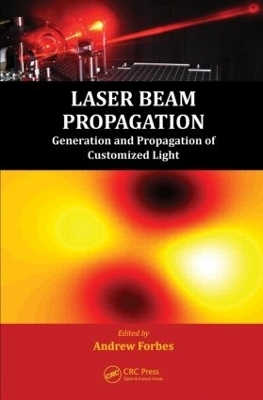
Laser Beam Propagation
Crc Press Inc (Verlag)
978-1-4665-5439-9 (ISBN)
Part one covers the physical optics approach to the propagation of optical waves, the concept of plane waves, the mathematical description of diffraction and Gaussian optics, and adapting the concepts to the single photon level. The book explains the parallels between the paraxial propagation of light beams and the Schrödinger equation in quantum mechanics, and delves into the description of paraxial optics by means of state vectors and operators. It also discusses classical optics and quantum entanglement.
Part two focuses on the application of modal decomposition to the characterization of laser beams, and provides a characterization of time domain pulses. It discusses tools for the temporal characterization of laser beams, the generation of arbitrary laser beams with digital holograms, and the use of spatial light modulators to display reconfigurable digital holograms capable of modifying and shaping laser beams. It also covers various techniques and the control of the polarization properties of light.
Part three defines the most commonly generated shaped light, flat-top beams, outlining their propagation rules as well as the means to create them in the laboratory. It also highlights Helmholtz-Gauss beams, vector beams, and low coherence laser beams.
The text presents the concepts of coherence theory and applies this to the propagation of low coherence optical fields. It also considers the recent developments in orbital angular momentum carrying fields, touches on basics properties, definitions and applications, and brings together the classical and quantum concepts of spatial modes of light.
Andrew Forbes, PhD, has spent several years working as an applied laser physicist, first for the South African Atomic Energy Corporation and then later in a private laser company. He is currently chief researcher at the CSIR National Laser Centre in South Africa and is the research group leader for mathematical optics. Andrew sits on several international conference committees, chairs the SPIE (Society of Photo-Optical Instrumentation Engineers) international conference on laser beam shaping and the OSA’s (Optical Society of America) Diffractive Optics and Holography technical group. He holds honorary professorships at the University of Stellenbosch and the University of Kwazulu-Natal.
SECTION I BACK TO BASICS. Optical Waves. From Classical to Quantum Optics. Time Domain Laser Beam Propagation. SECTION II GENERATION AND CHARACTERIZATION OF LASER BEAMS. Spatial Laser Beam Characterization. Characterization of Time Domain Pulses. Generation of Laser Beams by Digital Holograms. SECTION III NOVEL LASER BEAMS. Flat-Top Beams. Helmholtz–Gauss Beams. Vector Beams. Low-Coherence Laser Beams. The Orbital Angular Momentum of Light. Miles Padgett and Reuben Aspden. Index.
| Erscheint lt. Verlag | 14.2.2014 |
|---|---|
| Zusatzinfo | 6 Tables, black and white; 141 Illustrations, black and white |
| Verlagsort | Bosa Roca |
| Sprache | englisch |
| Maße | 156 x 234 mm |
| Gewicht | 635 g |
| Themenwelt | Mathematik / Informatik ► Mathematik |
| Naturwissenschaften ► Physik / Astronomie ► Optik | |
| Technik | |
| ISBN-10 | 1-4665-5439-8 / 1466554398 |
| ISBN-13 | 978-1-4665-5439-9 / 9781466554399 |
| Zustand | Neuware |
| Haben Sie eine Frage zum Produkt? |
aus dem Bereich


